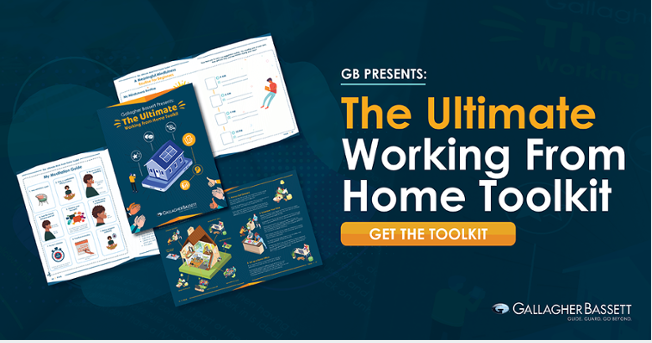Remote Health and Safety Assessments: A How-To Guide for Beginners

Whether you're an employer or worker, you may think that you don't need health and safety assessments for remote working. But providing health and safety assessments for remote workers is just one of the ways that insurance carriers, companies, and employees can help keep risk minimised and safety optimised.
Transitioning from a corporate office to a remote home office isn't as easy as you think. Especially when you're dealing with the challenges of determining how to provide workers' health and safety assessments. Please read the guide below if you want to know how to start health and safety assessments for workers as they transition from a corporate office to a remote or home environment.
health and safety assessments
Remote working has brought about unique and one-of-kind challenges for those trying to maintain business operations while workers provide their skills and knowledge at remote locations. The navigation of some of the difficulties has allowed for growth and development in being able to determine what safety hazards exist in homes and remote work areas. Each home or remote location can be efficiently assessed by what’s known as, Own the Outcome decision making.
Every service and solution from Injury Management to General Liability Insurance can help deliver the right resources when you, your workers, or your company need it most. You need to know some criteria for finding affordability integrated with your business needs’ best match in comprehensive insurance. That’s why using the below guide provides you with some of the best analytical tools available in keeping remote workers safe.
safe work environments
Providing remote workers with valid and reputable health and safety assessments is one way you can ensure safe, wellness, and business operations that stay in sync and linked together. A study conducted by the University of Otago indicates that over 85% of workers prefer to continue working from home at least some of the time.
So it's imperative that you start at the beginning, which includes ensuring workers' health and safety both psychologically and physically.
creating a safe work environment
Some of the safest work environment include, but aren't limited to;
- Determine what ergonomic equipment and furniture necessary so you're able to have the safest and work environment for any of your particular needs.
- Do a walk-through, determine the most hazardous areas, and make a plan that helps prevent accidents in those areas of your home.
- Ascertain if you need to identify and take any safety training that correlates with your new work environment.
- Come up with home-office best safety practices for your new work environment.
You also want to communicate your new safety standards or health practices with any other workers conducting business in their respective remote or home locations. Every organisation or company must provide clear and concise communication about local, state, and federal regulatory health and safety standards.
conducting risk assessment
Most risk assessments are broken into various categories. The categories can be Administrative, Technical, and Physical. Each of these categories requires a stepped methodology to determine what needs to be secured or supported for the safest remote work environments.
Finding ways to implement administrative, technical, or physical safeguards can help ensure you never have to deal with the fall-out of the most stressful health and wellness accidents or illnesses. That’s why the stepped methodology data assessment tools you use should be evaluated by security and privacy professionals. It’s essential to provide security and privacy regulations to guide remote workers based on the system implemented that measures risk.
Insurers, corporate employers, and safety professionals all need to be on the same page when conducting and assessing risk for remote workers.
keeping data safe
Once you conduct and assess remote workers' risk, a more significant problem sometimes occurs as you have to determine how to keep data secure. The first data safety criteria you need to ensure is that you have a safe internet connection. You can often do this by having personnel use a virtual private network (VPN) internet connection.
But not all VPNs are equal. That's why you want to ensure that your internet connections are encrypted and monitor infections. You also want to ensure your workers use varied and strong passwords and always rely on two-factor authentication. Your two-factor authentication can be a company PIN assigned to each worker that's sent to their mobile phones.
Finally, you want to use encryption software with the latest and greatest firewall protection for any Wi-Fi connection, communication, or data record. There one common denominator when dealing with health and safety assessments, and that is everyone needs to determine the status of each of the workers from the beginning of the remote worker contract. That's why when you're performing health and safety assessments in new remote work environments that you include a starting point for the best ways to proceed.
the health of employees is a good place to start
Reach out to Gallagher Bassett when you want to focus on your company and leave the challenges of health and safety assessments to those who leave nothing to chance. When the world changes as it has with COVID19, you need to know how to make the necessary changes that ensure safer work environments for remote workers. Gallagher Basset helps guide you in optimised solutions for risks you face when dealing with this new remote working business world.
Everyone from the remote worker to the administrators needs to assimilate their new remote working scenarios. Every remote worker should feel confident and secure in risk assessments and their respective plan of action. Future work adaptations may come and go, so make sure you feel confident in your future by feeling secure in your remote work protocols for risk assessments.
Disclaimer: The advice and guidelines recommended in this article may change in the future as more and new information becomes available.
Author


